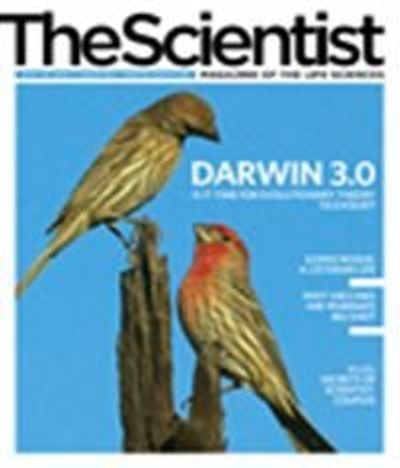A pioneer's perils

On a rainy morning at the National Institutes of Health campus in Bethesda, Md., last fall, Duke University biochemist Homme Hellinga took the stage to sum up what he had been doing over the last 5 years with the $2.5 million Pioneer award he received in 2004. Unlike other NIH grants that require a strict game plan with concrete goals, the Pioneer award is a kind of no-strings-attached slush fund to encourage “high-risk, high-impact research.” Hellinga and his cohort had come to report on their findings and experiences.
Hellinga’s grey waves of hair encircle a cherubic face just beginning to show its age. As many in the audience were no doubt aware, he was currently the subject of a Duke investigation into research misconduct after two pioneering papers on computational enzyme design were retracted in 2008. But as he...
In October, just weeks after Hellinga’s speech, Birte Höcker and colleagues at the Max Planck Institute for Developmental Biology in Germany published a paper in the Proceedings of the National Academy of Sciences disputing the conclusions of Hellinga’s high-profile studies on ligand-binding proteins, which appeared in Nature in 2003 and PNAS in 2004. The original papers reported that Hellinga’s team modified several proteins from E. coli in order to accept, for instance, the explosive TNT, instead of the sugars to which they normally bind—a first step to designing novel biosensors and enzymes. But Höcker’s group found that none of the designed proteins were bound to ligands as expected. In a statement after the paper was released, Hellinga said his group would investigate the discrepancies.
While no one has alleged misconduct with respect to these papers, questions linger about the earlier retractions. Hellinga was the senior author of a celebrated Science paper in 2004, claiming his team had been the first to design and synthesize a novel enzyme, called novoTIM. Hellinga later retracted it along with a follow-up paper in another journal. Initially, he directed the blame at his student, lead author Mary Dwyer, whom Duke investigated and cleared of research misconduct. Then, as his own behavior came under scrutiny from his critics, he publicly invited Duke to begin an investigation of his role in the disputed work. (Hellinga failed to return calls for comment for this article.)
Students say they are irritated by the plodding progress of the misconduct investigation, which is now apparently in its 20th month. (In 2007, institutions took an average of 12 months to wrap up cases after notifying the Office of Research Integrity of the investigations.) “I think a lot of people here have been through so much they want to see things resolved,” says graduate student Jeremy Bloch. A former student still working in the department (who declined to be named) shared Bloch’s sentiment, noting that, “A tense meeting [in September] resulted in a lot of students speaking out about the administration’s inability to do anything about Hellinga’s treatment of Dwyer.”
Last year, when I spoke with him, Hellinga seemed to want to make amends with Dwyer, describing her as “a very strong graduate student.”
At the Pioneer symposium, Hellinga focused on an automated process to make proteins, a procedure that was first described in his 2007 paper in Protein Science (16:379–90). He made no mention of the recently disputed papers, nor did he talk about the nine other ligand-binding papers published since.
Interested in reading more?




